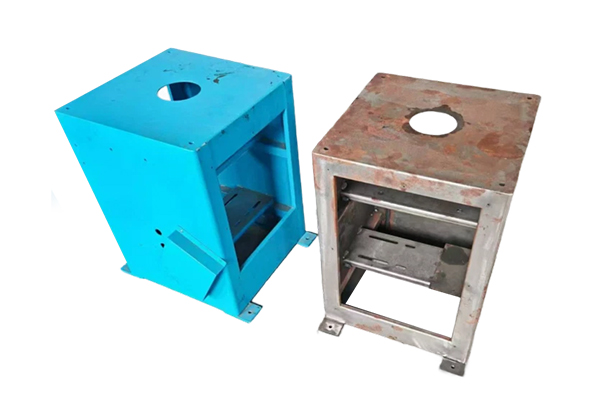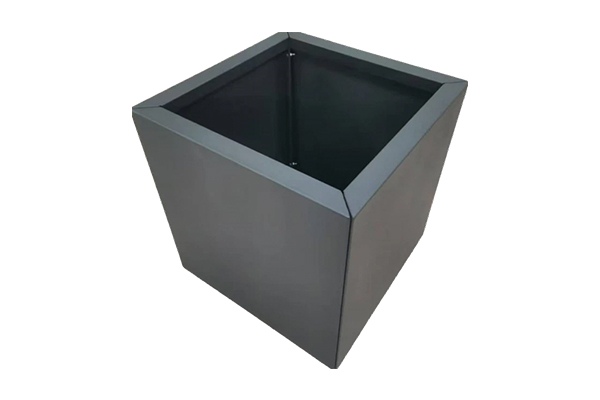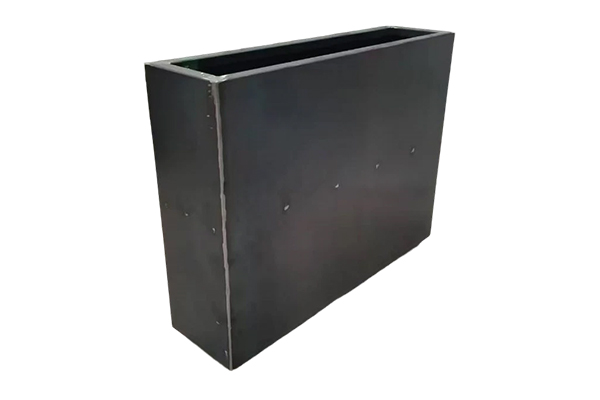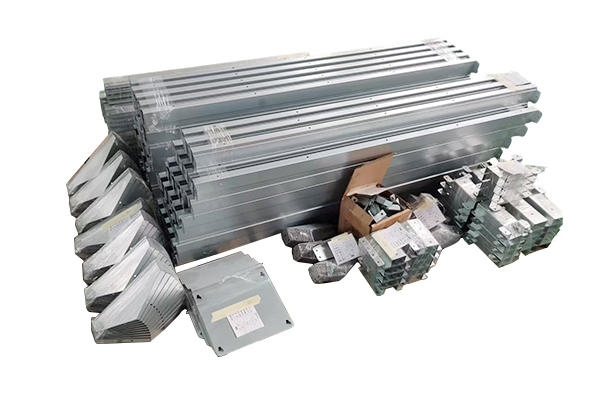How do assembled flower pots rust at different rates in different climates?
Release Time : 2025-08-04
The variability in the rust rate of assembled flower pots in different climates is primarily due to the impact of environmental factors on the oxidation process on the surface of weathering steel. These flower pots are made of a special material, not designed to prevent rust but rather to guide the rust formation in a controlled, stable, and aesthetically pleasing manner. Over time, a dense layer of rust naturally forms on the surface of the flower pots. This rust not only prevents further intrusion but also acts as a barrier to protect the base material, ensuring the long-term stability of the structure. However, the speed and form of this process vary significantly across different climates.
In humid, rainy regions, flower pots typically rust more rapidly. Frequent exposure to rain provides ample moisture to the steel surface, accelerating the oxidation reaction. Every rainfall acts as a catalyst for rusting, especially in environments with large temperature swings between day and night, where condensation further promotes rust accumulation. Under these conditions, the flower pots may show noticeable rust color changes within just a few weeks, developing a deep, rich reddish-brown coating after several months. This rapid evolution allows users to clearly perceive the traces of time on the flowerpot, as if witnessing a natural transformation.
In dry, rainless inland or desert climates, the rusting process is slower and more gentle. Due to the low humidity in the air, moisture is less likely to remain on the metal surface, lacking the necessary catalyst for oxidation reactions, so the rust layer takes longer to form. In these areas, it may take months or even longer for the initial rust color to develop on the flowerpot. Although the change is slow, once the rust layer begins to stabilize, its texture often becomes more uniform and fine, exhibiting a sense of age-honored quality. This slow evolution imbues the flowerpot with a tranquil and profound beauty, ideal for landscape designs that blend minimalism with nature.
In coastal or high-salt environments, the rusting behavior of flowerpots differs. Salt spray carried by sea breezes is highly corrosive and could theoretically accelerate metal oxidation. However, the special alloy composition of weathering steel makes it resistant to salt spray, providing a degree of resistance to this attack. Despite this, flower pots in coastal areas may still rust faster than inland areas, and the rust may appear slightly darker or mottled. This unique appearance, in turn, becomes a reflection of regional characteristics, adding a rugged and authentic natural feel to any seaside patio or balcony.
Temperature fluctuations also play a significant role in the rusting process. In regions with distinct seasons, the frequent alternation between hot and cold weather creates subtle stress variations in the metal due to thermal expansion and contraction. This promotes the shedding and regeneration of surface oxides, thereby fostering the formation of new rust. In tropical or frigid regions, where temperatures remain constant year-round, temperature fluctuations are less pronounced, and the rusting process relies more on cyclical changes in humidity and precipitation, exhibiting a relatively steady evolutionary rhythm.
Notably, the placement of the flower pot also influences the rusting rate. Flower pots exposed to direct sunlight and wind and rain rust much faster than those placed under eaves or in sheltered areas. Sunlight not only generates heat but also can affect the oxidation reaction pathway through ultraviolet rays. A well-ventilated environment facilitates moisture circulation, preventing accumulation of water that can lead to localized excessive corrosion.
Although some rust may leak during the initial stages of rusting, this is a necessary stage of natural evolution. By choosing the right placement and using auxiliary tools like a drip tray, this process can be effectively managed to avoid impacting the ground or the surrounding environment. Over time, the rust layer stabilizes and the leaking gradually disappears, ultimately revealing a sturdy and textured appearance.
In summary, the varying rusting rates of assembled flower pots under different climatic conditions demonstrate the subtle yet profound interaction between materials and their environment. Each improvement is designed to provide a better user experience while also demonstrating respect and understanding for the laws of nature. In the future, as people's understanding of sustainable materials and the aesthetics of time deepens, these time-evolving flower pots will demonstrate their unique value in even more spaces, pushing horticultural design towards a higher level of integration between ecology and art. Whether in the humid south, the arid northwest, or the windy coast, they uniquely blend into their environment, becoming a witness to the symbiosis between nature and humanity.
In humid, rainy regions, flower pots typically rust more rapidly. Frequent exposure to rain provides ample moisture to the steel surface, accelerating the oxidation reaction. Every rainfall acts as a catalyst for rusting, especially in environments with large temperature swings between day and night, where condensation further promotes rust accumulation. Under these conditions, the flower pots may show noticeable rust color changes within just a few weeks, developing a deep, rich reddish-brown coating after several months. This rapid evolution allows users to clearly perceive the traces of time on the flowerpot, as if witnessing a natural transformation.
In dry, rainless inland or desert climates, the rusting process is slower and more gentle. Due to the low humidity in the air, moisture is less likely to remain on the metal surface, lacking the necessary catalyst for oxidation reactions, so the rust layer takes longer to form. In these areas, it may take months or even longer for the initial rust color to develop on the flowerpot. Although the change is slow, once the rust layer begins to stabilize, its texture often becomes more uniform and fine, exhibiting a sense of age-honored quality. This slow evolution imbues the flowerpot with a tranquil and profound beauty, ideal for landscape designs that blend minimalism with nature.
In coastal or high-salt environments, the rusting behavior of flowerpots differs. Salt spray carried by sea breezes is highly corrosive and could theoretically accelerate metal oxidation. However, the special alloy composition of weathering steel makes it resistant to salt spray, providing a degree of resistance to this attack. Despite this, flower pots in coastal areas may still rust faster than inland areas, and the rust may appear slightly darker or mottled. This unique appearance, in turn, becomes a reflection of regional characteristics, adding a rugged and authentic natural feel to any seaside patio or balcony.
Temperature fluctuations also play a significant role in the rusting process. In regions with distinct seasons, the frequent alternation between hot and cold weather creates subtle stress variations in the metal due to thermal expansion and contraction. This promotes the shedding and regeneration of surface oxides, thereby fostering the formation of new rust. In tropical or frigid regions, where temperatures remain constant year-round, temperature fluctuations are less pronounced, and the rusting process relies more on cyclical changes in humidity and precipitation, exhibiting a relatively steady evolutionary rhythm.
Notably, the placement of the flower pot also influences the rusting rate. Flower pots exposed to direct sunlight and wind and rain rust much faster than those placed under eaves or in sheltered areas. Sunlight not only generates heat but also can affect the oxidation reaction pathway through ultraviolet rays. A well-ventilated environment facilitates moisture circulation, preventing accumulation of water that can lead to localized excessive corrosion.
Although some rust may leak during the initial stages of rusting, this is a necessary stage of natural evolution. By choosing the right placement and using auxiliary tools like a drip tray, this process can be effectively managed to avoid impacting the ground or the surrounding environment. Over time, the rust layer stabilizes and the leaking gradually disappears, ultimately revealing a sturdy and textured appearance.
In summary, the varying rusting rates of assembled flower pots under different climatic conditions demonstrate the subtle yet profound interaction between materials and their environment. Each improvement is designed to provide a better user experience while also demonstrating respect and understanding for the laws of nature. In the future, as people's understanding of sustainable materials and the aesthetics of time deepens, these time-evolving flower pots will demonstrate their unique value in even more spaces, pushing horticultural design towards a higher level of integration between ecology and art. Whether in the humid south, the arid northwest, or the windy coast, they uniquely blend into their environment, becoming a witness to the symbiosis between nature and humanity.







